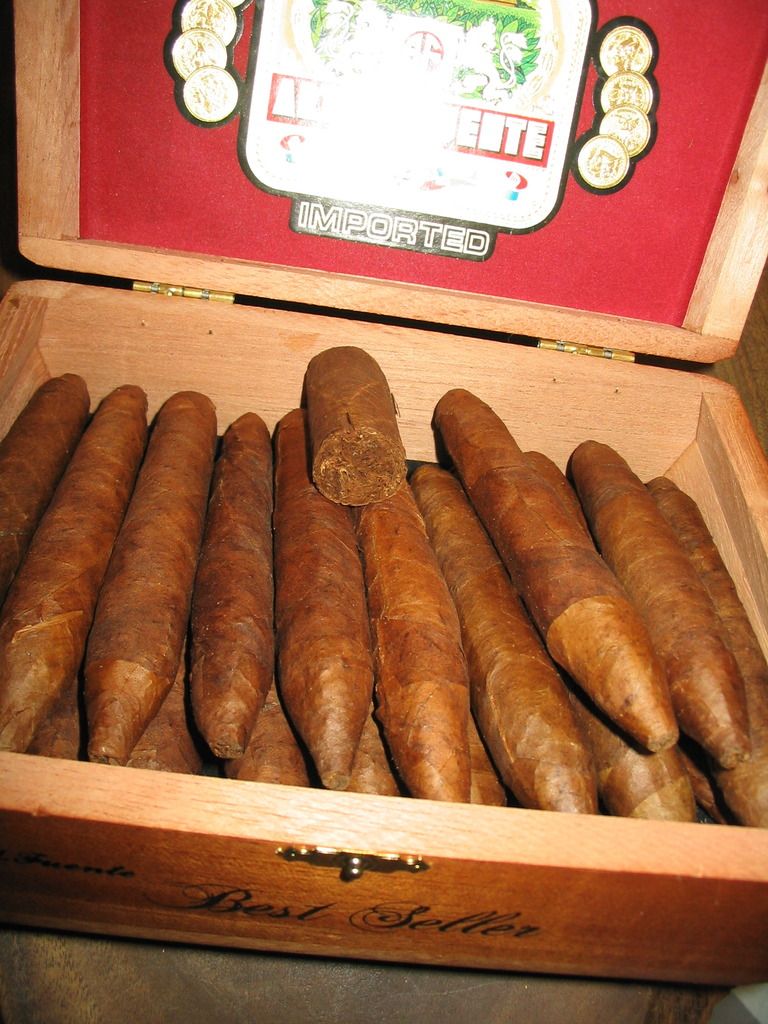Glass seems like a good idea but I really love what a pungent cedar box imparts to a stick, or what I imagine it does. And when I use a matching vitola it takes it to the next level of max contact to the wood and to the other sticks. And I like the way it looks, the sticks all snug and safe. Plus they're getting some of the mojo (spirit, aroma) of the awesome Cuban sticks that pre-habitatted the box.
How is a humidity-controlled sealed space different from a humidor?
If you really love what a cedar box does then, by all means, use it. A lot of beginners seem to believe that a cedar humidor/box is a necessity. It's not. It's a tradition that's been used for many years but not for the reasons that most people think. If things aren't monitored properly and temps or RH should fluctuate the cedar can become your worst enemy.
"How is a humidity-controlled sealed space different from a humidor?"
They both set out to do a specific job but the traditional 'humidor' as we know it has many flaws that can be problematic especially the leaky lid.
A 'humidor'... (definition from Wiki) My comments in
blue.
The interior is typically a veneer of Spanish cedar, which possesses the following desirable characteristics for cigar storage:
Many of the veneers are paper thin and are very limited as to its designated function.
1. It holds more moisture than most woods, so it helps maintain humidity.
Important to realize, it can also release this moisture back to the cigar impart an awful acrid, bitter taste if temps and rh are not monitored closely.
2. It is not prone to "warping" or "cupping" in high humidity.
But they do "warp and cup". The seal of the lid is an area that is an ongoing problem in many, many humidors. You need to perform the 'dollar bill' test or the ' flashlight test' to make sure it is a good seal. There are tons of problems that can cause a 'leaky lid'. A well built humidor with a proper fit lid can be quite costly and still warp in the future. On the other hand, glass is very inexpensive and provides a perfect maintenance free, tight seal that is a far better design especially when combined with a Boveda humidity control. It's a no-brainer.
3. It imparts its aroma to cigars. For the same reason, some cigars are wrapped in Spanish-cedar sheets before they are sold.
(Not everyone likes the taste) Glass imparts nothing. If you want a cedar aroma put in a stick or two of cedar. In a cedar lined humidor you have NO choice.
4. It can repel tobacco beetles, pinhead-sized pests which can ruin entire stocks of cigars by eating the tobacco and laying eggs, causing further infestation. They can also be discouraged by ensuring the humidor does not get hotter than 20 °C (68 °F). The beetle eggs usually only hatch at around 25 °C (77 °F) although there are also instances where they will hatch at cooler temperatures if the humidity is too high.
(Eggs that are already on the leaf are already there in either cedar or glass.) The cedar prevents any "further infestation" but doesn't stop what's already in there. The tight seal prevents further infestation in glass.
So a glass sealed jar can be FAR better for the designed interest of maintaining cigar in a perfectly sealed container at a fraction of the cost. It's a win/win across the board.






